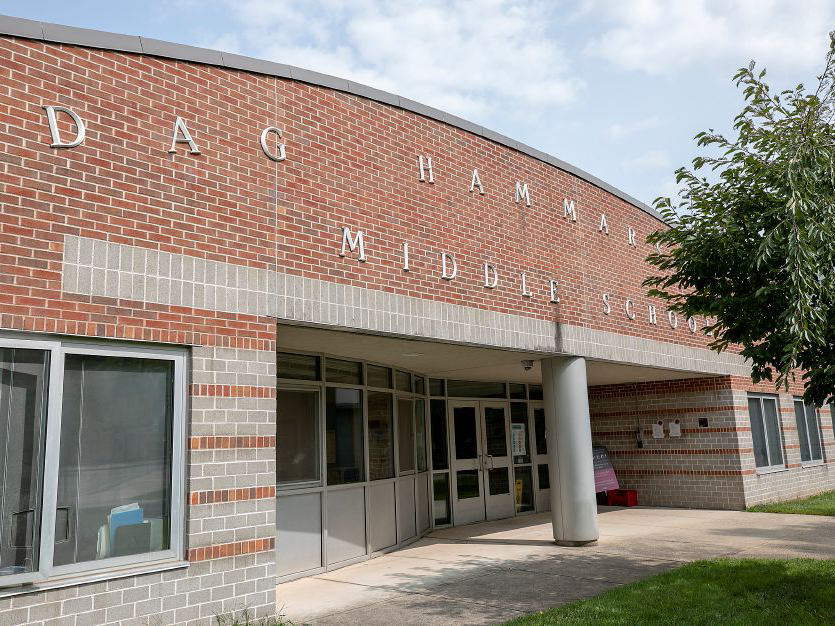
Photo by The Record-Journal
Despite coronavirus concerns, Wallingford Public Schools (WPS) are now back in session with a new hybrid schedule. Students alternate between taking their classes in-person and virtually on a rotating cycle.
In order to limit the number of students inside the school building at once and accommodate for social distancing, students have been split alphabetically into two cohorts that alternate in-person class days. During the school day, students, faculty, and staff must wear masks at all times. After-school clubs and tryouts for fall sports have also been cancelled for the trimester.
Since the start of the school year, three coronavirus cases have already been reported at Dag Hammarskjold Middle School, only adding to the already stressful learning environment. After discovering that the individuals were infected, the Board of Education temporarily closed schools for a day to disinfect the building. The Board then began contact tracing the infected students to limit the spread of the virus within the community. This investigation is currently underway, and both the state and town Departments of Health are continuing to monitor the situation. Despite the risks of more cases emerging, the Board of Education decided to keep schools open.
Hybrid learning poses a new challenge for many students who are asked to balance an intense class schedule with the effects of extended periods of screen time. Delayna Strahowski, an eighth-grader at Dag Hammarskjold, begins her day with two electives, followed by six uninterrupted core classes.
“I feel that one of the most difficult parts of the learning structure is the back-to-back meets,” Strahowski said. “I can’t remember any of the things that they taught me, because I have no time to process the information. It can get very overwhelming sometimes.”
When Wallingford Public Schools first began online classes back in March, they provided students with laptops. Despite this implementation, many students still struggle with technical issues, including weak internet connections. Alison Connelly, a senior at Lyman Hall High School, reported that poor internet access interferes with schoolwork.
“Lots of students don’t have good service in the areas that they are, so their sound and video during the Google Meets are extremely choppy and delayed,” says Connelly. “It’s hard to hold a conversation or ask a question during distance learning, because it becomes hard both to understand people and to not talk when others are speaking.”
Despite the unusual circumstances that come with the hybrid learning environment, teachers still strive to provide students with a thorough academic experience. “Even though we are in this pandemic, I feel that the teachers that I have are making do with what they have and just rolling with it. That alone is helpful, because they are maintaining a positive attitude, which is very important,” Strahowski said.
Within the hybrid structure, teachers have had to find ways to keep students engaged with very limited physical activity, interactions, and hands-on projects that would normally occupy a day. On top of this, students are spending only half of the day attending in-person classes. Mr. George Bikakis, a teacher at Dag Hammarskjold, said, “The district is really trying to satisfy everyone. We get to see the kids everyday, but the problem is that we don’t have a lot of time.”
“This is the first time the district is dealing with something like this. They are just experimenting and trying to find a balance. There is really no perfect solution, but I’m optimistic they’ll make adjustments,” Mr. Bikakis said.




